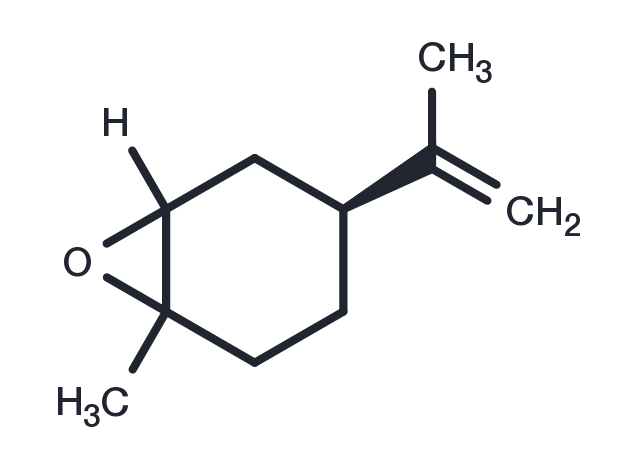Powder: -20°C for 3 years | In solvent: -80°C for 1 year


Limonene oxide, (-)- is a bioactive chemical.

| Pack Size | Availability | Price/USD | Quantity |
|---|---|---|---|
| 100 mg | Inquiry | Inquiry | |
| 500 mg | Inquiry | Inquiry |
| Description | Limonene oxide, (-)- is a bioactive chemical. |
| Synonyms | FEMA No. 4656, L-1,2-Epoxylimonene |
| Molecular Weight | 152.23 |
| Formula | C10H16O |
| CAS No. | 203719-53-3 |
Powder: -20°C for 3 years | In solvent: -80°C for 1 year
You can also refer to dose conversion for different animals. More
bottom
Please see Inhibitor Handling Instructions for more frequently ask questions. Topics include: how to prepare stock solutions, how to store products, and cautions on cell-based assays & animal experiments, etc.
Limonene oxide, (-)- 203719-53-3 Limonene oxide, () FEMA No. 4656 Limonene oxide, Limonene oxide, ( ) L-1,2-Epoxylimonene inhibitor inhibit
